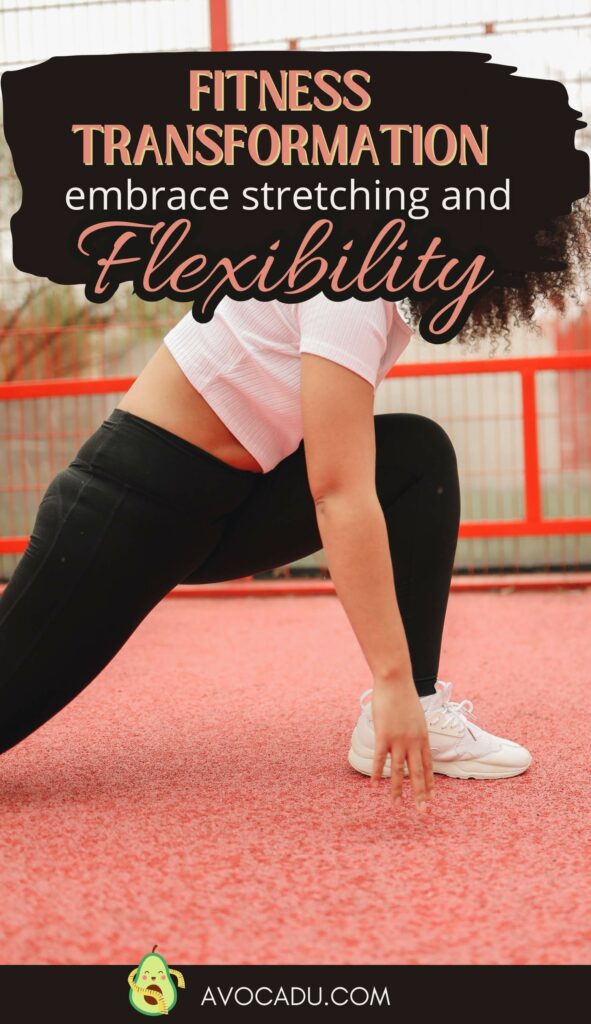The Importance of Stretching and Flexibility for Women’s Fitness
Have you ever wondered why your fitness trainer keeps emphasizing on stretching before and after your workout? Well, it all circles back to one fundamental fitness element – stretching and flexibility.
Flexibility, believe it or not, is a key player in our daily routines, not to mention our dedicated fitness regimen.

This post may contain affiliate links, which helps keep this content free. Please read our disclosure for more info.
Understanding Flexibility
Flexibility, at its very core, is all about the range of motion in your joints and the ability of your muscles to move freely.
Picture your body as a complex, beautifully crafted machine; flexibility is like the oil that keeps this machine running smoothly, helping all its parts move in harmony. From the simplest actions to the most complex, flexibility plays a crucial role.
Think about the start of your day: You get up from bed, reach up to open the cupboard, bend down to tie your shoelaces – every one of these actions involves a certain degree of flexibility.
As the day progresses, you might go for a jog, lift weights at the gym, or perform a challenging yoga pose.
All of these activities require and build upon the flexibility of your body, allowing you to move with ease and grace.
Flexibility doesn’t just make these movements possible; it makes them efficient, powerful, and safe. Research shows that individuals with good flexibility often outperform those without, in various physical activities.
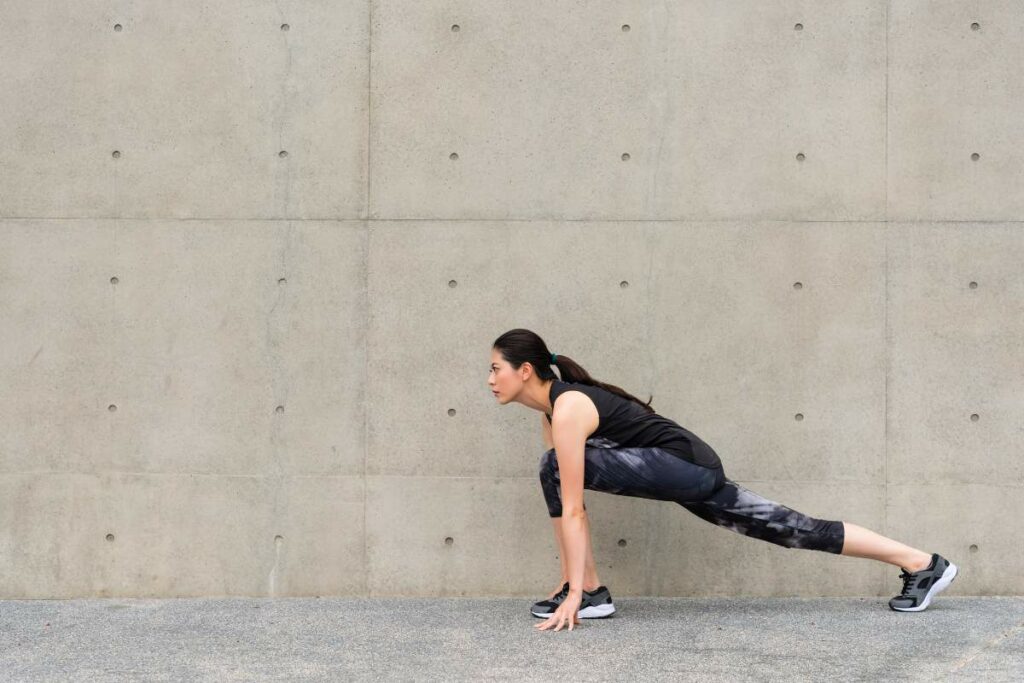
It enhances your ability to run faster, lift heavier, and jump higher. And it’s not just about performance. Flexibility is also an unsung hero in injury prevention.
When you’re flexible, your body can absorb the demands of movement, whether it’s the impact of your feet hitting the pavement during a run or the strain of lifting a heavy object.
Without adequate flexibility, your muscles and joints are more prone to injuries such as strains and sprains.
Being flexible helps you perform better, stay safe, and live a healthier life. So, while strength, endurance, and aerobic capacity often steal the spotlight, let’s remember to give flexibility the love it deserves!
Related Article: Yoga Poses for Flexibility, 16 Most Effective Asanas
The Impact of Stretching on Flexibility
Stretching is the magic key that unlocks your body’s potential for greater flexibility. It’s like a door that leads you to a world of smoother movements, better posture, and less pain. But remember, not all doors are the same, and neither are all stretches.
There are several types of stretching techniques, each with its unique benefits and appropriate application. Let’s take a closer look:
Static Stretching: This is the most common form of stretching, where you hold a stretch for a certain period, usually between 15 to 60 seconds.

This helps to lengthen your muscles and increase your flexibility over time. It’s best to do static stretches after your workout when your muscles are already warmed up.
Dynamic Stretching: Dynamic stretching involves moving parts of your body and gradually increasing reach or speed of movement. Think leg swings, arm circles, or lunges with a twist.
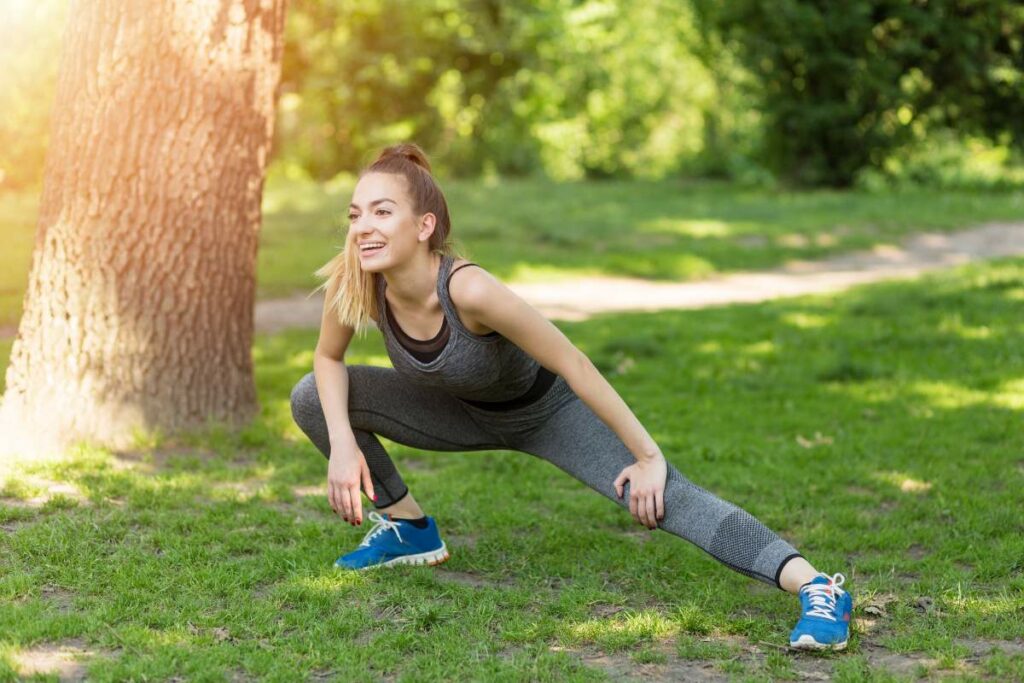
This form of stretching is ideal before a workout as it helps to increase your body temperature and prepare your muscles for the upcoming activity.
Ballistic Stretching: This involves bouncing in a stretch. While this may increase range of motion, it can also be risky as the rapid, bouncing movements can overstretch your muscles and potentially lead to injuries.

Therefore, ballistic stretching is generally not recommended for the average fitness enthusiast.
Proprioceptive Neuromuscular Facilitation (PNF): Sounds complex, right? But don’t let the name scare you! PNF is a more advanced form of stretching that involves both stretching and contracting the muscle group being targeted.
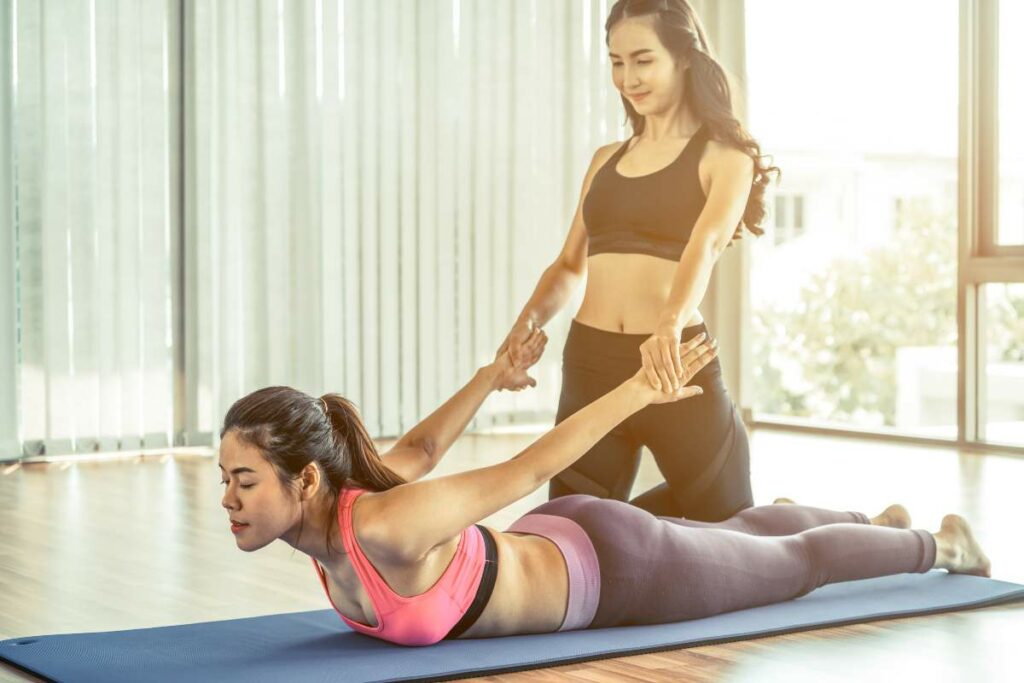
Often performed with a partner, PNF stretching can lead to greater flexibility gains compared to traditional static stretching. However, it should be done under the guidance of a trained professional to ensure correct technique and prevent injuries.
Understanding when and how to use each type of stretching is pivotal in your journey towards improved flexibility. Each stretch serves its unique purpose, and a well-rounded routine that includes a variety of stretching techniques can do wonders for your overall fitness.
Benefits of Flexibility for Women’s Fitness
If you’re wondering, “Why should flexibility matter to me?” or “I’m not a gymnast, so why bother?”, let’s demystify this right away.
Flexibility should be a prime concern, not just for athletes, dancers, or gymnasts, but for all of us. And, ladies, the benefits it brings to our fitness and overall well being are immense!
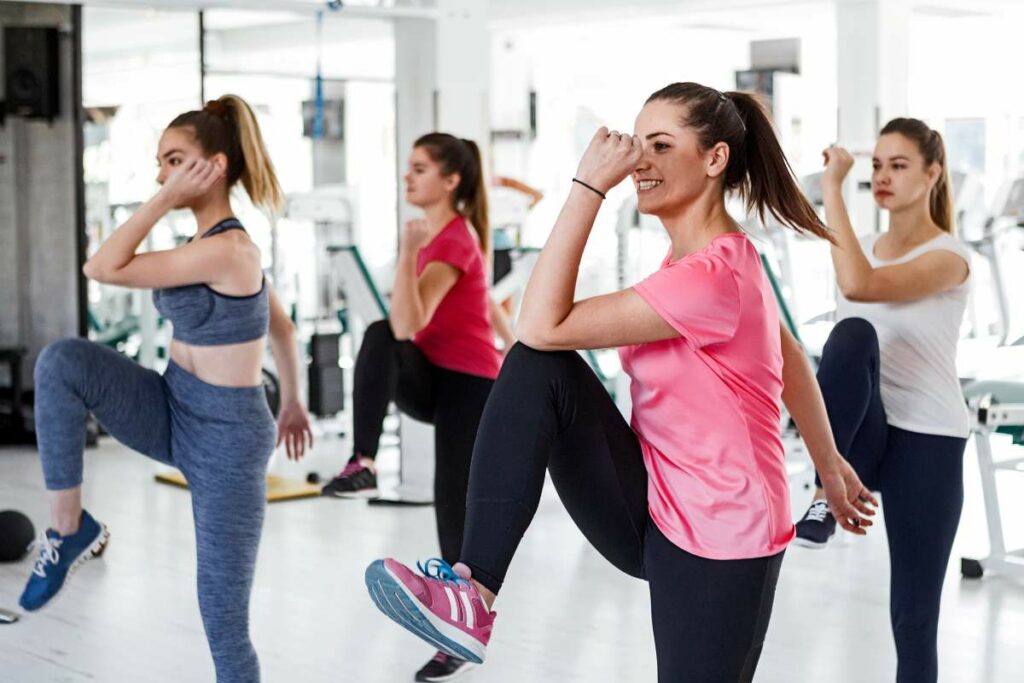
Enhanced Performance
No matter what your fitness passion – be it running, weightlifting, cycling, aerobics, or anything else, increased flexibility can significantly boost your performance.
How? Flexible muscles have a greater range of motion, meaning they can move more efficiently and powerfully.
The result? You can run that extra mile, lift that heavier weight, and conquer that intense aerobics class.
Injury Prevention
We’ve all heard of someone who’s pulled a muscle while working out, right? A flexible body is like a fortified castle; it’s much less prone to injuries.
This is because supple, well-stretched muscles can better handle the stress of physical activities without being strained or damaged.
Pain Alleviation
Nagging lower back pain from long hours at your desk job? A stiff neck from staring at your computer? Ladies, you’re not alone.
These are common ailments in today’s world. Regular flexibility training can be your secret weapon to combat these issues. Stretching helps increase blood flow to your muscles, relieving tension, and promoting relaxation.
Improved Posture and Confidence
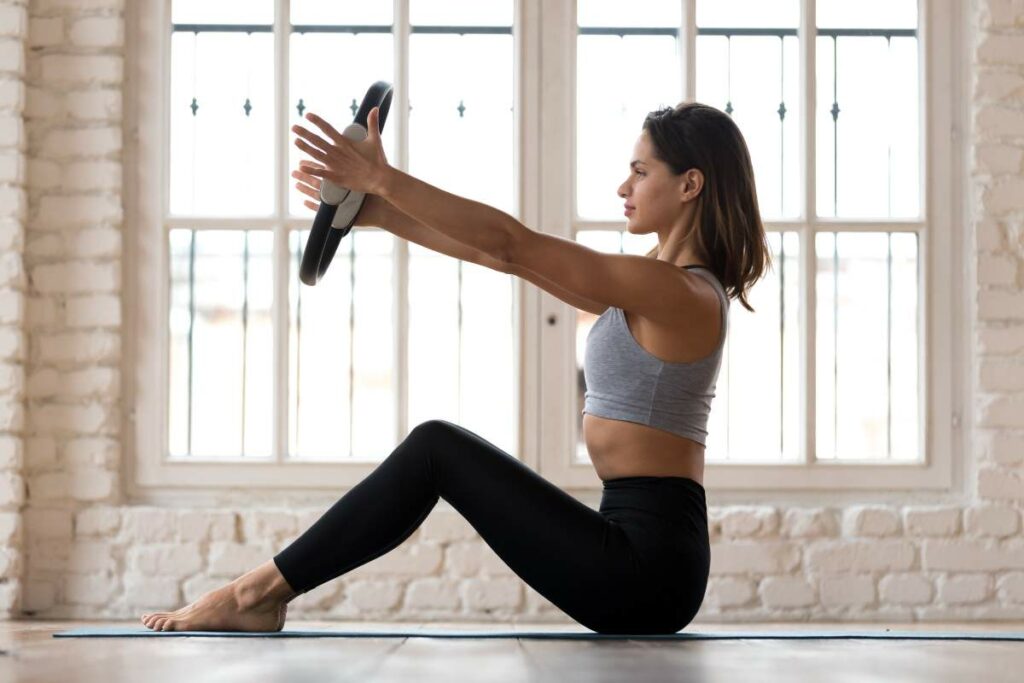
Now, who doesn’t want to walk into a room with poise and confidence? Good flexibility often leads to better posture. When your body is flexible, you can maintain proper body alignment more easily, preventing slouching and promoting an upright posture.
The result? You not only look more confident, but you also feel more confident.
Enhanced Everyday Function
Flexibility isn’t just about fitness; it’s about life! A flexible body makes everyday activities easier and more efficient, whether it’s bending down to pick up your bag, reaching up to a high shelf, or playing with your kids or grandkids.
Whether you’re a gym-goer, a yoga enthusiast, or someone simply trying to lead a healthier lifestyle, remember that flexibility is not just a nice-to-have; it’s a must-have!
Related Article: 20-Minute Beginner Yoga Workout For Flexibility
Flexibility and Aging

Aging is a natural and beautiful process, but it’s also true that it brings changes in our bodies, which we sometimes find challenging.
One of the things that tend to decline as we grow older is our flexibility. The adage “Use it or lose it” rings particularly true here.
Over time, our muscles naturally lose strength and elasticity, our joints lose their range of motion, leading to stiffness, aches, and a reduced ability to perform certain movements.
Decreased flexibility can contribute to other health issues like arthritis, balance disorders, and difficulty in performing daily activities, thereby affecting our quality of life.
However, this doesn’t mean we should accept decreased flexibility as an inevitable part of aging. On the contrary! There’s a silver lining here (and we’re not talking about the streak in your hair).
Studies have shown that maintaining a good level of flexibility can slow down this process and make a world of difference in how we age.
Engaging in regular flexibility training can help us retain and even regain some of our youthful suppleness. Not only can this help keep aches and pains at bay, but it can also help us maintain our independence and mobility as we age.
Imagine being able to reach high shelves, play with grandchildren, or do garden work with ease well into your later years!
The key is consistency. Incorporating a few minutes of stretching into your daily routine can help improve and maintain flexibility, no matter your age. It’s never too early or too late to start working on your flexibility.
Flexibility isn’t about turning yourself into a pretzel; it’s about maintaining a level of suppleness that allows you to live your life to the fullest.
Related Article: Yoga for Older Women, 8 Effective Asanas
How to Improve Flexibility

Wondering how to unlock your body’s full flexibility potential? It’s easier than you might think!
With some simple strategies and consistency, you’ll be on your way to a more flexible and agile body. Here are some tips on how to improve your flexibility:
Regular Stretching
The first and most crucial step to improve flexibility is incorporating regular stretching into your routine. Aim for a few minutes of stretching every day.
Try to include both dynamic stretches (great for warming up the body) and static stretches (ideal for cooling down post-workout). Consistency is key here – the more regularly you stretch, the more flexible you’ll become.
Try Yoga or Pilates
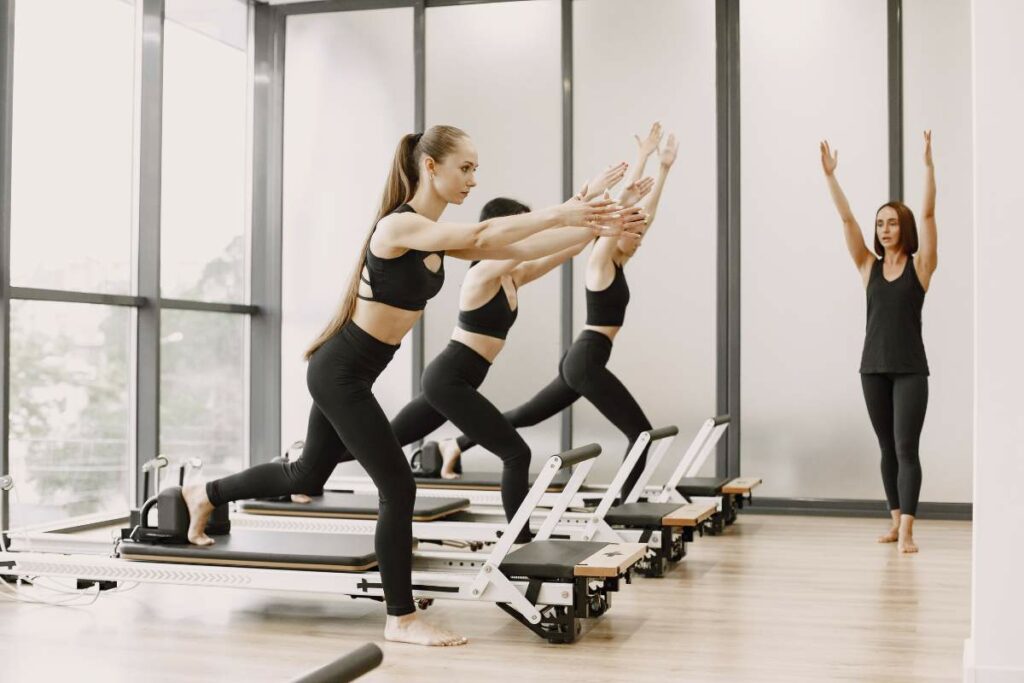
Yoga and Pilates are renowned for improving flexibility. They include a variety of poses and movements that stretch virtually every muscle group in your body.
Whether you join a class at your local gym, follow an online tutorial, or even do a few yoga poses in the morning, integrating these activities into your weekly routine can do wonders for your flexibility. Plus, they’re also fantastic for building strength and balance!
Experiment with Tai Chi
Known for its slow, mindful movements, Tai Chi is another excellent activity for improving flexibility. It promotes bodily awareness, helping you understand your body’s natural limits and capabilities while gently pushing your boundaries.
Stay Hydrated

I can hear the collective sigh now, “They’re talking about staying hydrated…again?”
Yes, we are, ladies, and for a good reason! It seems like we can’t write an article on this website without somehow finding a way to sneak in a reminder to drink more water.
Why? Because hydration is the unsung hero of health and fitness, which includes flexibility!
Keeping your body well-hydrated is vital for maintaining your flexibility. Your muscles and connective tissues are like sponges, and when they’re well-hydrated, they become more pliable, allowing you to stretch further and move more freely.
Just imagine trying to bend a dry, brittle sponge versus a wet, flexible one. You get the idea.
So, go ahead, roll your eyes at us, but then do us a favor: Grab your favorite water bottle, fill it up, and take a long, refreshing sip. Your muscles and your flexibility goals will thank you!
Warm-Up and Cool Down
Before any workout, ensure you take a few minutes to warm up your body with light cardio and dynamic stretching. Post-workout, take the time to cool down with some static stretches. This will gradually increase your body’s flexibility over time and also prevent workout injuries.
Don’t Rush
It’s important to take it slow. Remember, improving flexibility is a journey, not a race. Never push your body into a stretch that feels uncomfortable or painful. Gradually increase the intensity of your stretches as your flexibility improves.
By incorporating these strategies into your routine, you can significantly improve your flexibility, leading to better workouts, fewer injuries, and an overall improved sense of wellness.
Embrace the Stretch and Transform Your Life
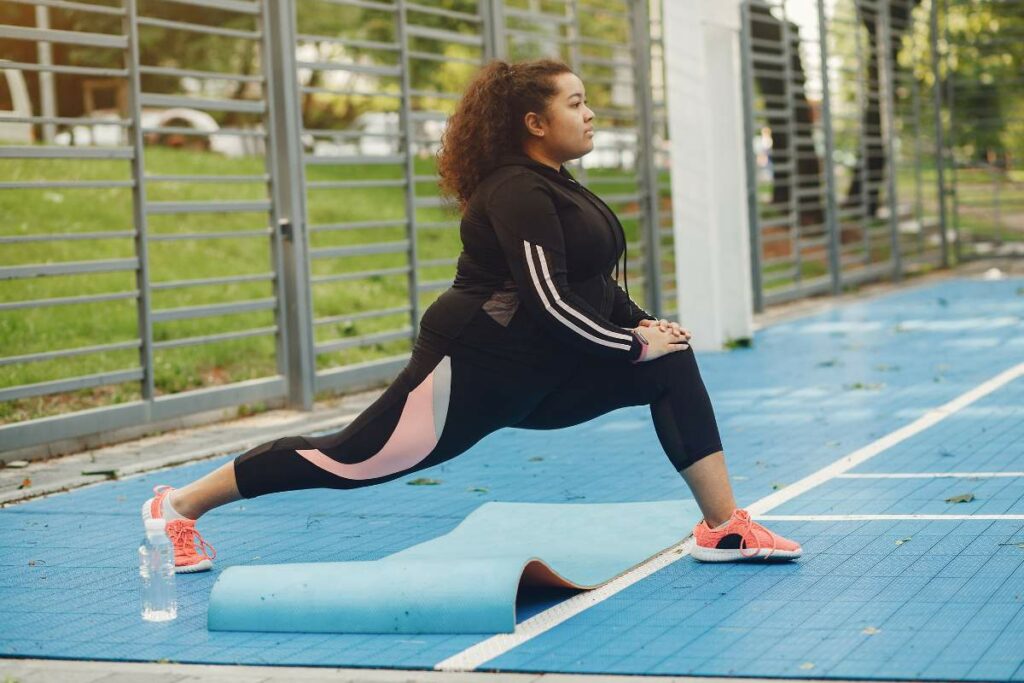
So, what’s the big takeaway, ladies? Well, it’s simple: Stretching and flexibility aren’t just for the gymnasts and yogis among us. They aren’t just about touching your toes, doing a perfect split, or impressing friends with some acrobatics.
No, they are integral to your overall fitness, crucial for injury prevention, essential for healthy aging, and, dare we say, a key to a confident, pain-free lifestyle. So, it’s time to embrace the stretch and love the flexibility!
But wait, there’s more. We don’t just want to leave you with this newfound appreciation for flexibility; we want to set you on the right path to improve your own!
Why not kick start this journey right now? Begin by dedicating just 10 minutes of your day to a simple stretching routine. You can check out some of our other blog posts or online resources for guidance.
Remember, consistency is key – the more you stretch, the more you move, the more flexible you will become.
Now, if you’re thinking, “Sounds great, but where do I start?” Don’t worry, we’ve got you covered!
We have a fantastic resource that combines flexibility, fitness, and fun – the Yoga Fat Loss Bible.

This comprehensive guide is more than just a yoga manual; it’s a roadmap to a healthier lifestyle.
Filled with a variety of yoga poses to improve flexibility, coupled with effective fat-burning workouts and dietary advice, it’s a one-stop-shop for your fitness goals.
